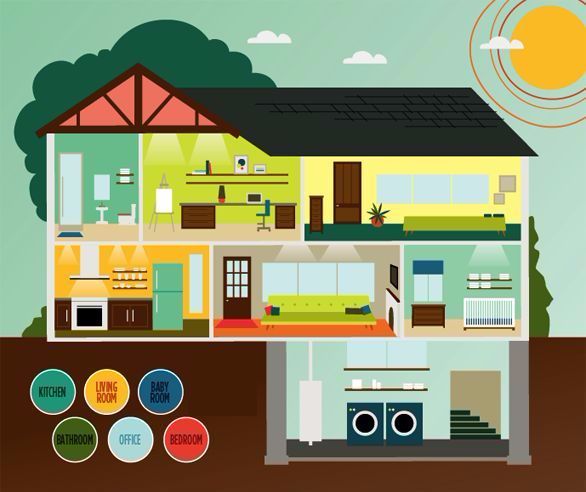9 Toxins Found In Most Homes

We’ve had a noticeable improvement in our health since we began to remove ‘hidden’ toxins that were slowly poisoning us from our home over the past year and a half. These days most people are generally aware about environmental concerns. And still there is always more to learn…
The short list of toxins under your roof may surprise you:
Formaldehyde offgasses (evaporates) from cushions, particleboard and the adhesives used to manufacture most inexpensive wood-based products. Carpets and carpet cushions may also offgas formaldehyde, causing eye and upper respiratory irritation. According to the EPA, formaldehyde may even cause cancer;
Radon is the second-leading cause of lung cancer in the United States, warns the Surgeon General. Radon is a natural radioactive gas that can seep into homes through cracks in the basement, the surrounding foundation and in well water. It enters the body quietly through the airways;
Lead keeps epidemiologists returning to the drawing board, says Soloway, “mostly because we know more now about the adverse effects of low-level exposure.” Levels once thought to be acceptable are now known contributors to learning disabilities and behavioral problems. Lead is found in paint in older houses, old plumbing and soil near highways and busy roads. It causes neurological and kidney damage, high blood pressure, disrupted blood cell production and reproductive problems;
Carbon monoxide will kill an estimated 660 Americans this year. Don’t look for exhaust fumes in the attached garage; the biggest culprit is the unserviced furnace burning propane, butane or oil; Arsenic is still lacing many household pesticides and is increasingly used as a wood preservative. Low levels of inorganic arsenic “may cause lung cancer risk,” according to the CDC. The Department of Health and Human Services agrees, adding arsenic compounds to the list of unknown carcinogens;
Vinyl chloride is the source of “new car smell”: The plastic interior of a new car offgasses this known carcinogen. Water sitting in PVC pipes overnight may also be steeping into a toxic tea. Very large exposures can lead to “vinyl chloride disease,” which causes severe liver damage and ballooning of the fingertips;
Hydrofluoric acid “can cause intense pain and damage to tissues and bone if the recommended gloves happen to have holes in them,” says Soloway. This highly corrosive substance is the active ingredient in many household rust removers.
But even the most liberal list of known toxins pales next to the order of volatile organic compounds (VOCs). VOCs comprise hundreds of natural and man-made, carbon-based agents. They react quickly with other carbon-based compounds, and evaporate easily, making them ideal solvents. VOCs can be found in disinfectants and pesticides, too.
Solvents: Benzene and methyl ethyl ketome traverse cell walls unchecked by normal cell defense. Both are known carcinogens. Cousins toluene, xylene, 1,1,1-trichloroethane and trichloroethylene make up the lion’s share of the solvent market;
Disinfectants: Phenols, which include biphenyl, phenolics and the preservative pentachloraphenol, are found in disinfectants, antiseptics, perfumes, mouthwashes, glues and air fresheners;
Pesticides: Chlordane, aldrin, dieldrin, though all banned for nearly two decades, continue to show up airborne in older houses.
Don’t be a statistical figure on the CDC’s tracking list: Be aware of what substances, from pesticides to cleaners, pose threats in your household. Maintain ingredient awareness. Many poisonings still occur because of product combinations, like the ammonia-chlorine bleach reaction, which produces the deadly respiratory irritant chloramine (a problem labeling practices have not addressed).
Replace toxic agents with non-toxic alternatives. Above all, educate your household to reduce risk and exposure.





